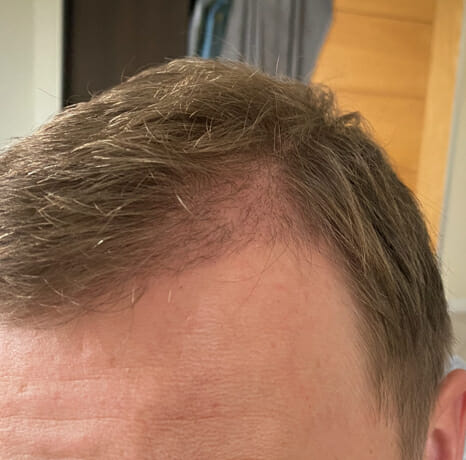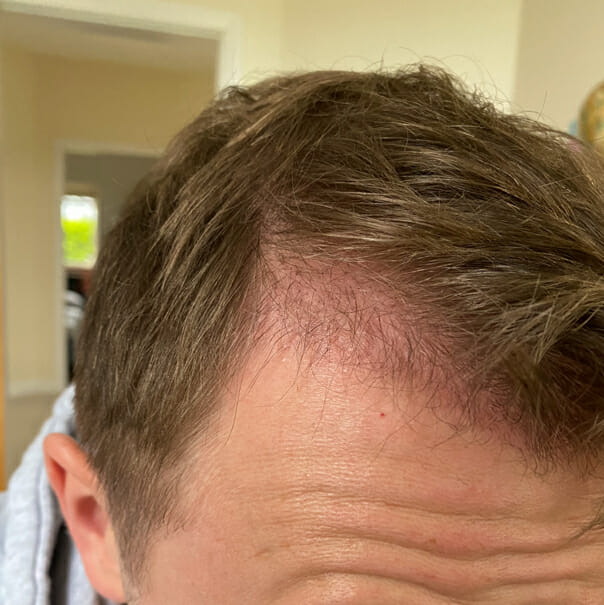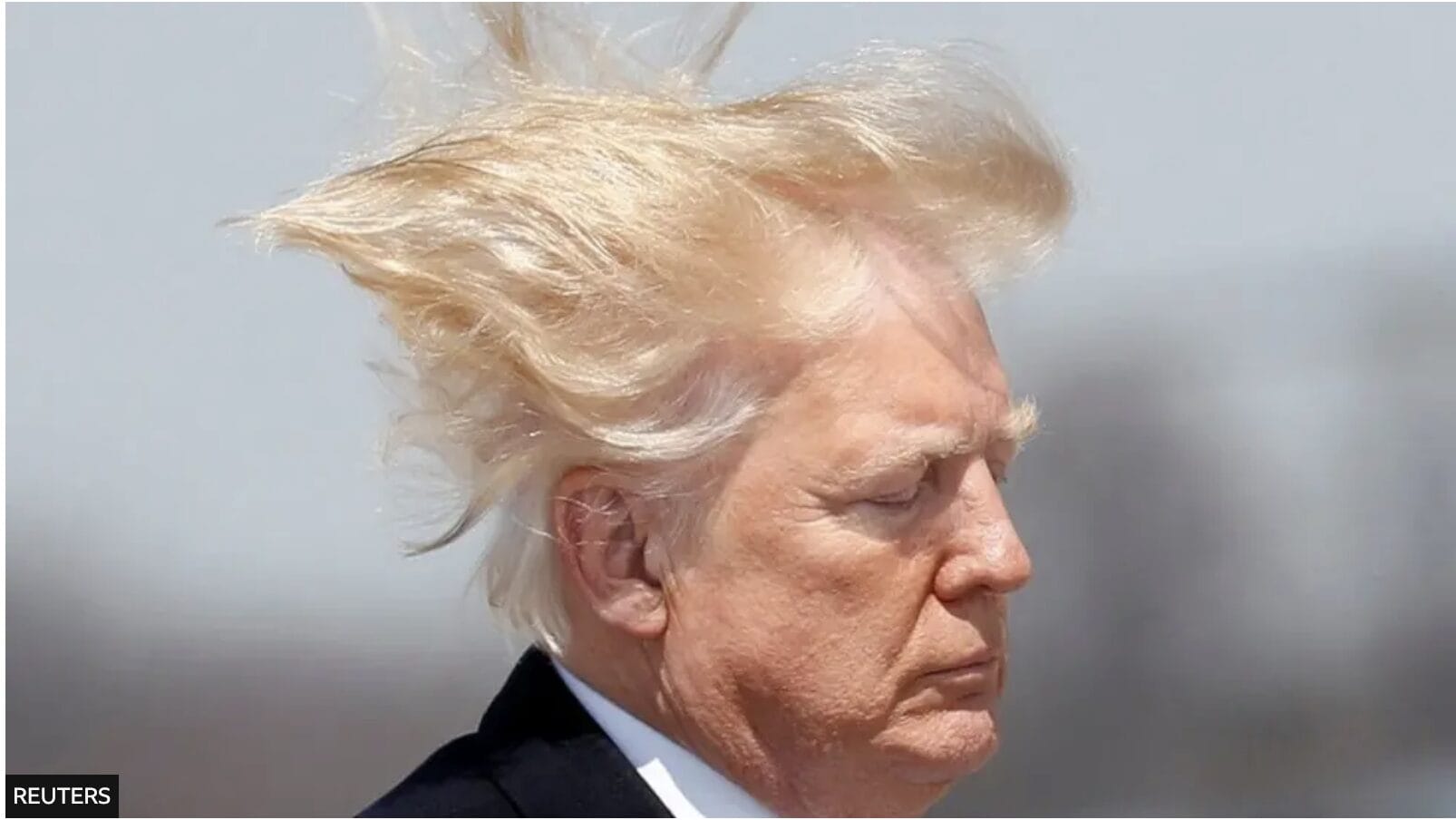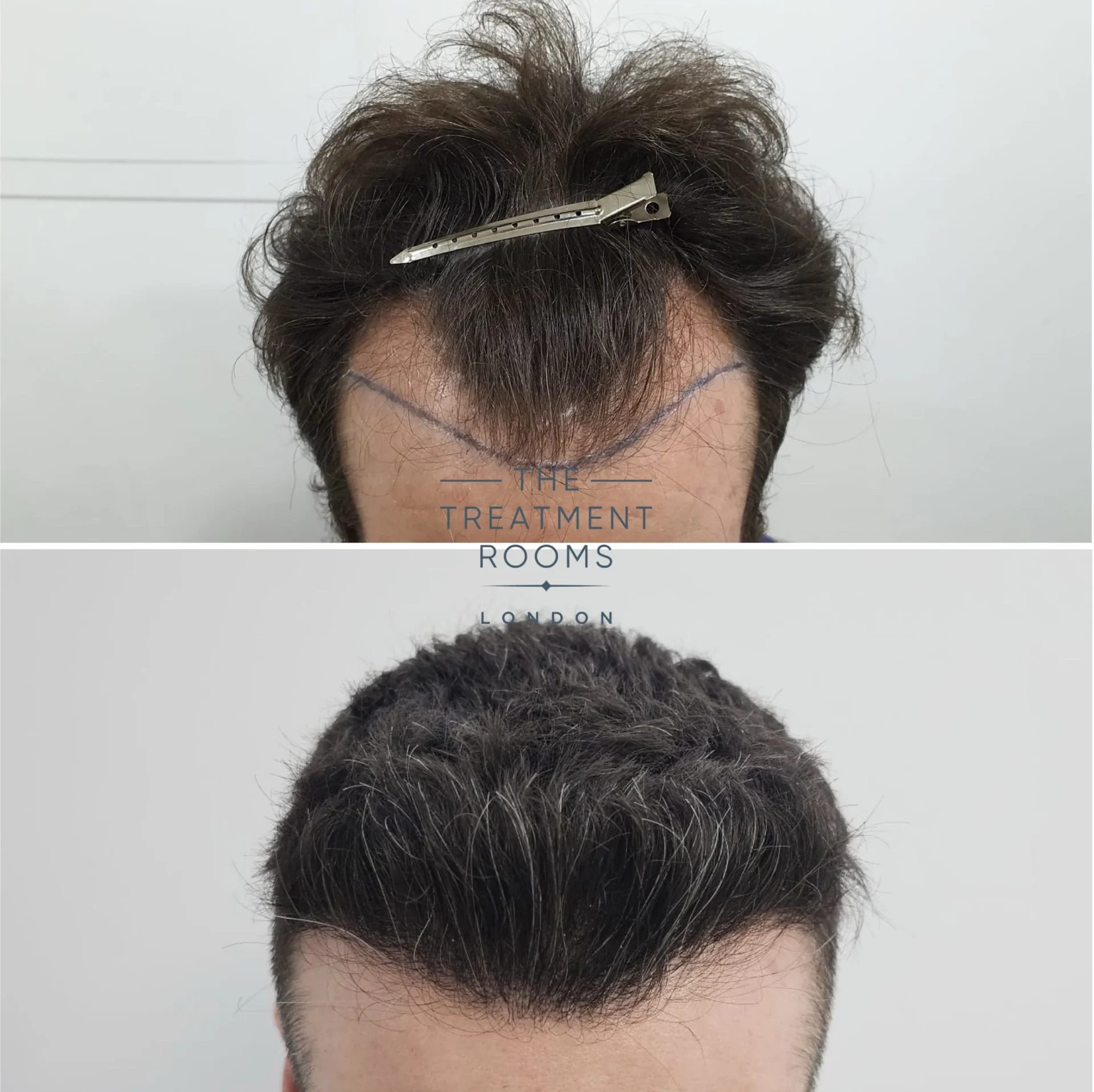After having a hair transplant, you’ll see scabbing and redness in the recipient area. After a 2 weeks, your scalp will become less irritated and the transplanted hair at the recipient area will start to fall out. This natural shedding process continues until around the two-to-three-month mark when the first new hairs will begin to grow through your scalp. At 4 months after a hair transplant you can expect some new hairs to start growing. The growth will initially be patchy and thin.
In this article, we will cover what to expect four months after your hair transplant.

At the 4 month mark after your hair transplant, you can expect your transplanted hair to start growing. Don’t expect it to be at a length and thickness for you to be able to style that may take a little longer
Dr Vara, Hair Transplant Surgeon and Director at The Treatment Rooms London
What to expect 4 months after a hair transplant
It is natural to see the implanted hairs shed in the first 3 months following surgery. So, when you look in the mirror four months after a hair transplant, what can you expect to see?
At the 4 months mark, you should have begun to notice new hairs emerge. You are still over eight months from seeing the final result of your hair transplant, and these new hairs are still immature.
As such, don’t be alarmed if there is still a patchy look to the recipient area. And don’t worry if these new hairs are thin and almost transparent in their appearance. It will take a few more months before your hair becomes longer, stronger, and darker. There will also be more growth from implanted follicles under the skin that are taking a bit longer to restart following the shedding phase.

What happens to the hair follicles that haven’t grown after 4 months?
It is normal for your transplant hair to shed following surgery. Follicles that are transplanted enter a resting phase known as telogen, which is part of the hair growth cycle. During this telogen phase, the hairs become disconnected from the hair follicles and are at rest for around three months before eventually falling out. Your new hair is being formed at the hair follicles throughout this telogen phase. This will mark the beginning of your hair growth.
You can see this process in action in the video below:
While a noticeable amount of hair growth may not be visible by month 4, rest assured that new hair is forming under the skin and will eventually be visible as new growth in the coming months.
Itchy scalp 4 months after hair transplant
People who have a hair transplant typically experience itchiness and irritation during the 2-4 weeks following the procedure.
Around month 4, you may still feel hair transplant side effects such as an itchy scalp. Try not to scratch or rub an itchy scalp, as this can increase irritation. You may find taking an anti-histamine or applying aloe vera gel to the area can help soothe the itchiness.
If you are still having problems with itching, you should notify your clinic and your Surgeon should be able to advise accordingly.
4 months after hair transplant no growth
If you haven’t seen any new hair growth by the four months stage, don’t panic. Each person’s new hair grows differently following a hair transplant. Hair growth rates following a hair transplant can be impacted by several factors, including the location of the transplant site and the hair transplant technique which was used.
It can take between three to six months for your new hair to emerge. This will depend on how long the resting (telogen) phase of your hair lasts. Once your old hair has been shed, the new hairs which have already formed at the follicles will start to penetrate through your scalp.
Can you speed up hair growth?
If your new hair is not growing as fast as you would like; remember – patience is the key. But there are also ways that you can speed up the recovery and hair growth process.
Here are some tips:
- The right nutrition – eating a balanced diet with protein and carbohydrates can aid hair growth. Biotin, which is integral in the production of the hair protein keratin, is found in meat and egg products.
- Massage – after 2 weeks have passed, your scalp will have recovered sufficiently for you to receive a soft head massage using oils for nourishment and hydration.
- Strengthening shampoos – consider the use of shampoos or supplements that may help to strengthen the hair follicles, such as argan oil shampoo, and biotin tablets.
What to expect after the 4th month of hair transplant recovery
While progress might seem slow, at month 4 you are not far away from seeing hair growth. From month 6, you will often notice a significant growth spurt, as your hair gets not only longer but stronger and thicker too. Once you reach a year to 12-18 months since your hair transplant, you can expect to see the final result.
For more information about the recovery process, please read our in-depth guide, ‘Hair Transplant Timeline: What To Expect’.
Our hair transplant recovery and aftercare service include a personalised aftercare package containing everything you need to help you on your aid to recovery. If you have any questions, get in touch with The Treatment Rooms London to book a consultation.
Share:
Authored by
Reviewed by
Book a Consultation
Related Blogs
Steven Whittaker’s Hair Transplant – Before And After
March 25, 2025
As Hibs legend Steven Whittaker makes headlines for taking the Dunfermline player-coach role, many gazes have turned…
Donald Trump’s Hair Transplant Rumours: True Or False?
March 25, 2025
Donald Trump has long been a figure of controversy and conversation, known not only for his political…
Cesc Fàbregas Hair Transplant: Before, After and His New Hairline
March 24, 2025
Hair loss is a common concern among celebrities whose public image often plays a significant role in…
The Effects Of Finasteride On Semen
March 20, 2025
Finasteride is commonly taken to help prevent hair loss in men suffering from male pattern baldness. Before…
A Guide to the Norwood Hamilton Scale: Understanding Hair Loss Stages
March 20, 2025
The Norwood scale (or Hamilton-Norwood scale) is the leading classification system used to measure the extent of…
Male To Female (MTF) HRT Hair Regrowth
March 18, 2025
While hair loss can happen to anyone and negatively impact your wellbeing, it can be incredibly challenging…
Jamie Laing Hair Transplant: Before, After and His New Hairline
March 18, 2025
Taking action to retain his youthful hairline, Jamie Laing decided to get a hair transplant, which changed…
Jack P Shepherd Hair Transplant: Before, After, and His New Hairline
March 12, 2025
Jack P. Shepherd is best known for portraying David Platt in Coronation Street for over two decades….
Jimmy Carr Hair Transplant: Before, After, and His New Hairline
March 12, 2025
As one of the most popular British comedians the complete change in Jimmy Carr’s hairline was a…











